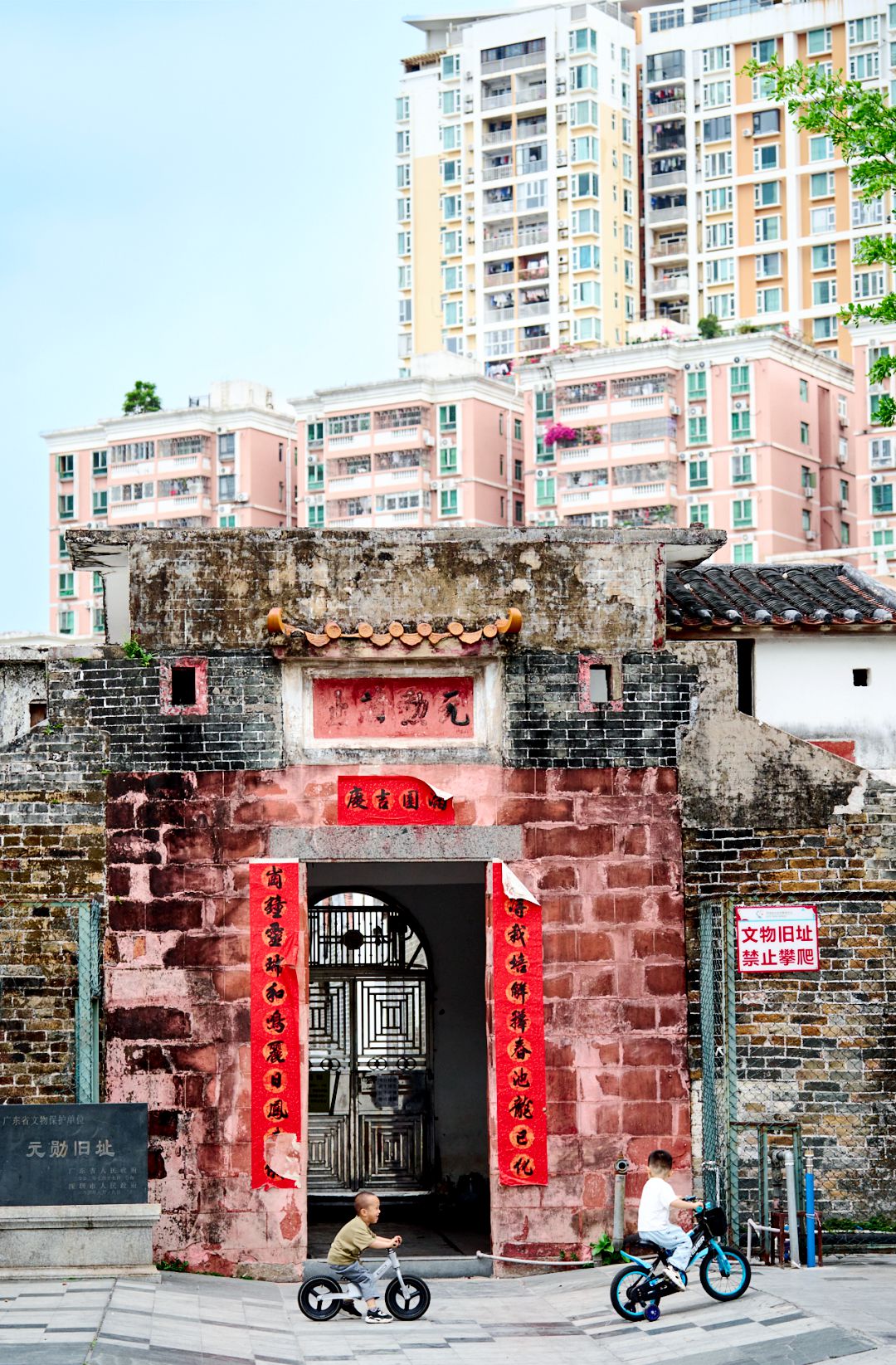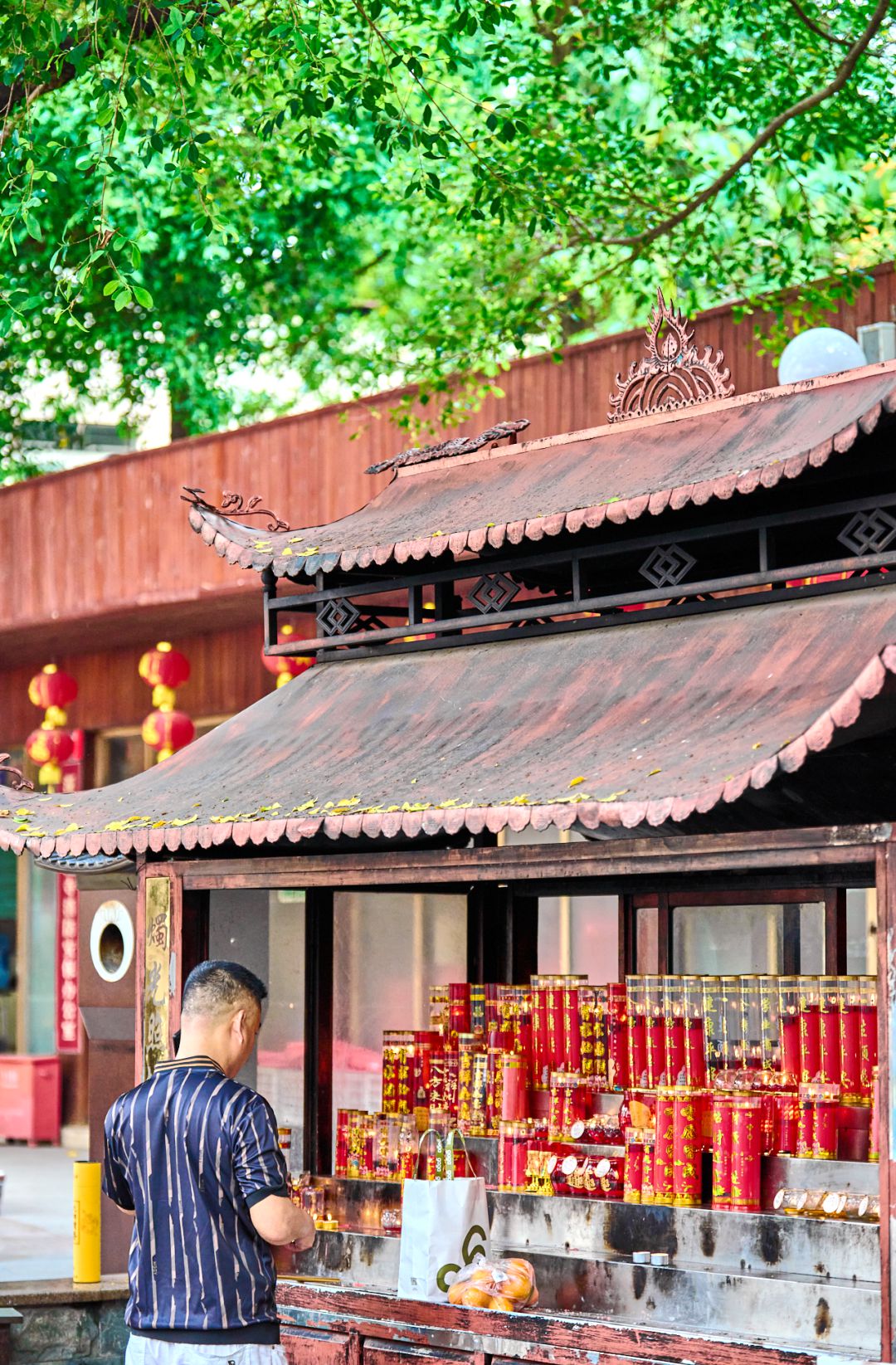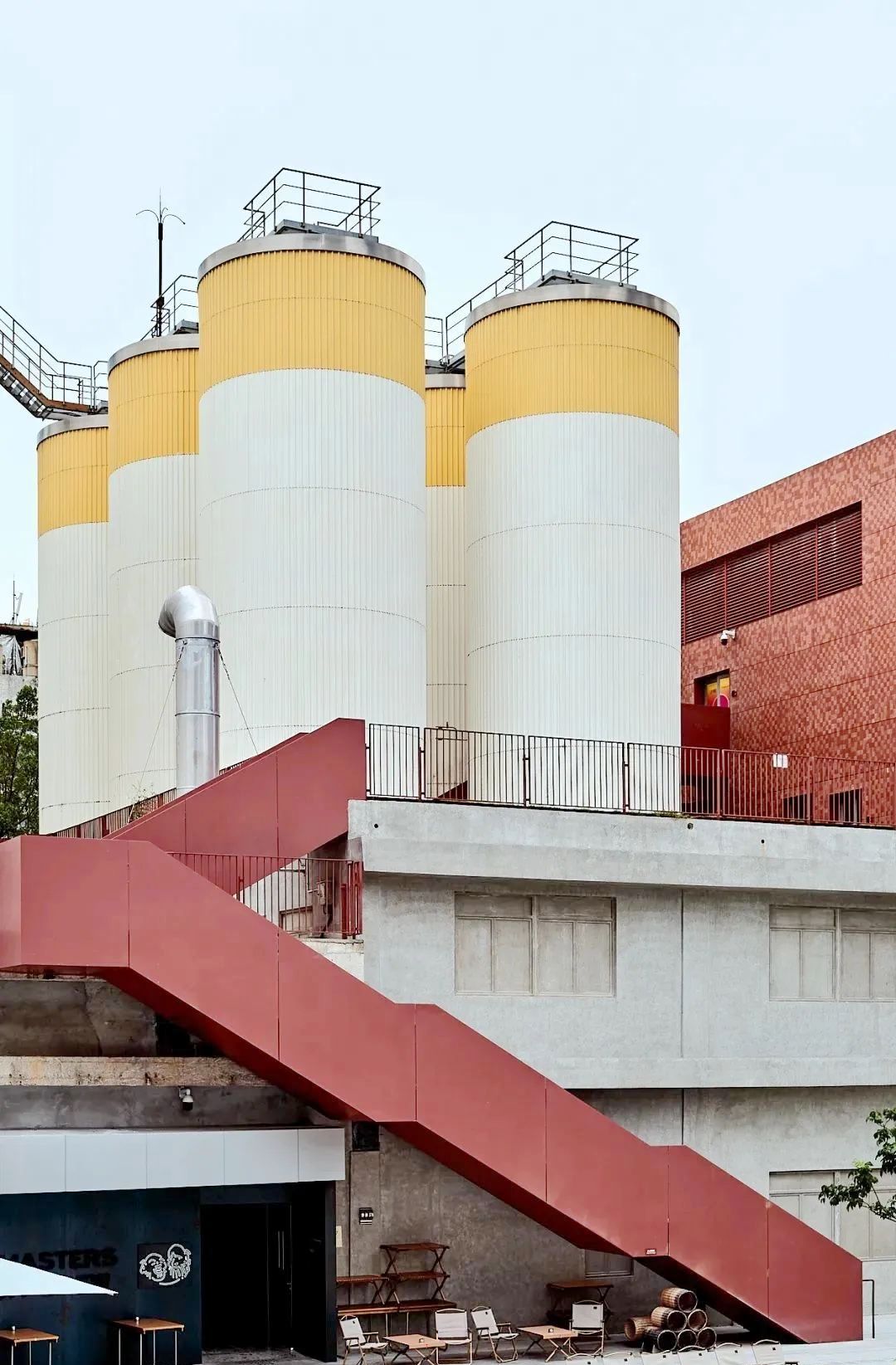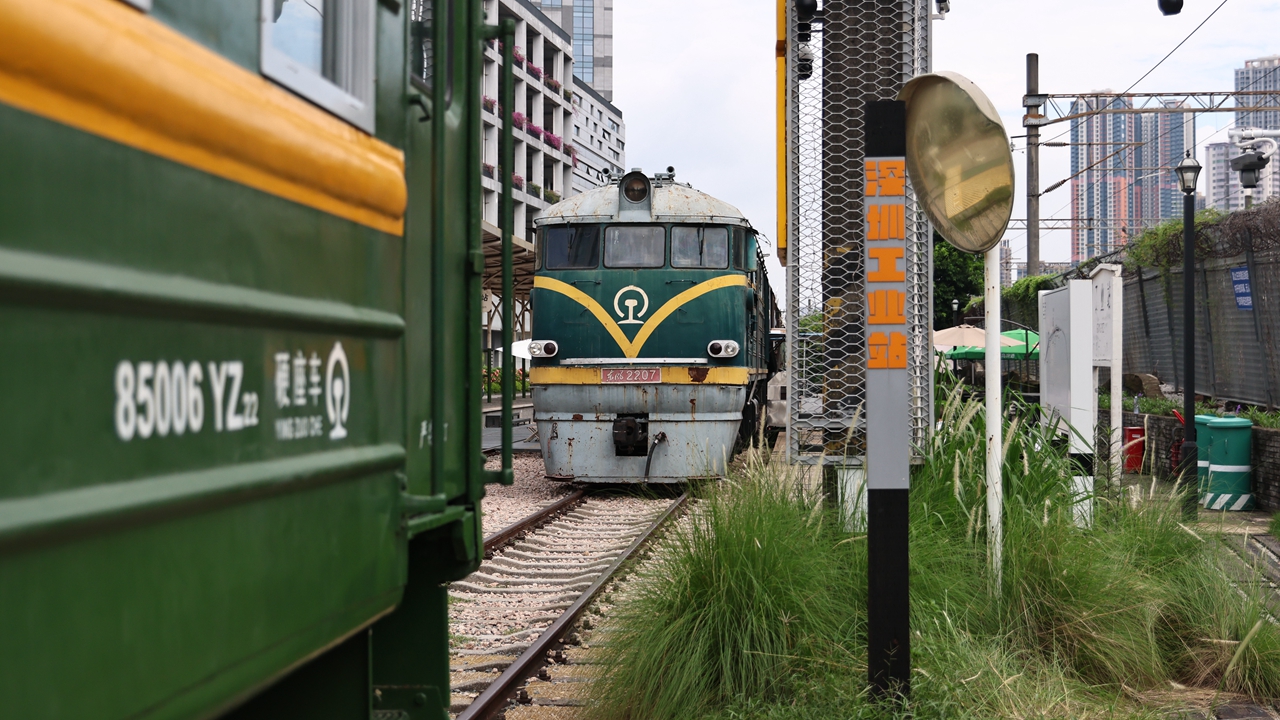A one-day cultural and urban exploration of Luohu
Writer: Claudia Wei | Editor: Zhang Zhiqing | From: Shenzhen Daily | Updated: 2025-04-28
Home to Shenzhen’s earliest skyscrapers like the iconic Guomao Building and Diwang Mansion, as well as the city’s first upscale MixC shopping mall, Luohu District has long been a commercial hub for this fishing village-turned international metropolis.
Beyond its commercial significance, the district offers a fascinating blend of history, culture, and urban charm through its unique heritage sites and vibrant neighborhoods.
Here’s a recommended itinerary for a one-day excursion to some of the lesser known spots in Luohu that are accessible by Metro during the upcoming May Day holiday.
Yuanxun Old Residence near Sungang Metro Station
Dating back to the Ming Dynasty, the 600-year-old Yuanxun Old Residence is currently the only well-preserved Guangfu (also known as Cantonese) walled house in downtown Shenzhen.

Kids ride bicycle in front of the Yuanxun Old Residence in Luohu District. Photos from WeChat official account "深圳微时光"
A typical Guangfu walled house is a square-shaped enclosed courtyard residence featuring a orderly layout. It usually contains three longitudinal alleys and six transverse alleys, surrounded by high walls on the four sides.
The Yuanxun Old Residence was built by the He family of Sungang to honor their ancestor, He Zhen, a renowned scholar in the Lingnan region. Covering an area of 4,265 square meters, the residence features four watchtowers at its four corners, and contains 140 rooms and three wells within the courtyard. The southern entrance bears a stone plaque inscribed with the four characters “Yuanxun Old Residence.” It was designated as a key cultural relic protection unit of Guangdong Province in 2002, and holds significant value for studying ancient architecture, family systems and Guangfu culture in the Shenzhen area.
Not far from the residence stands a Tianhou temple, where residents in the community pay tributes on the first and the 15th days of each lunar month.
Add: Sungang urban village, Luohu District
Metro: Line 7 to Sungang Station (笋岗站)
Wanfo Chan Temple near Yijing Station
Wanfo Chan Temple, located near Donghu Park, is a Buddhist temple whose name literally means ten thousand Buddhas temple. It serves as a place for worshiping and cultural exchange.

A visitor lights incense in Wanfo Chan Temple in Luohu District.
The Four-Faced Buddha statue, placed outside the temple, was a gift from the Thai Supreme Patriarch on behalf of Thailand to Shenzhen’s Hongfa Temple, and was consecrated and enshrined at Wanfo Chan Temple in 2008. Known as the wish-fulfilling Buddha, its four faces represent career, health, wealth and marriage. The incense offerings at the Four-Faced Buddha in Thailand are very popular and flourishing.
The nearby Donghu Park is also worth exploring after visiting the temple.
Add: Yanhe Road North, Luohu District
Metro: Line 5 to Yijing Station (怡景站)
Jinpi Fang Cultural Block near Buxin Station
The former site of Shenzhen Jinwei Brewery where Jinwei Beer was originally produced has been converted into Jinpi Fang Cultural Block. It is Shenzhen’s first brewery-themed art district, featuring numerous cafes and Western restaurants.

Jinpi Fang in Luohu District.
After Jinwei Brewery was relocated, the site underwent a transformation that combined demolition, reconstruction, and preservation of industrial heritage. Some distinctive brewery facilities, such as beer fermentation equipment and can production lines, were retained. As one of the few places in Shenzhen showcasing industrial-style architecture, Jinpi Fang has become a popular spot for young people, especially photography enthusiasts.
Add: 9 Dongchang Road, Luohu District
Metro: Line 5 to Buxin Station (布心站)
Railway Park near Caopu Station
This is not the Metro station of the same name on Line 5 in Qianhai, but a railway-themed park transformed from a defunct train station in Caopu, Qingshuihe Subdistrict.
The former Shenzhen Gongye Station, built in 1960 and now the park’s location, used to serve as the last transit point on the Chinese mainland for freight trains transporting agricultural produce to Hong Kong. Although the train station fell into disuse following Shenzhen’s rapid development, its rail tracks, platforms and light signals remain. Two out-of-service diesel locomotives on the tracks have been converted into a graffiti wall.

An out-of-service diesel locomotive in Railway Park in Luohu District. Liu Xudong
Also of interest is the Three Express Trains Museum, named in honor of the three express trains that departed from Wuhan, Zhengzhou, Shanghai or Changsha to ferry fresh goods to Hong Kong via Shenzhen. Visitors can watch a documentary about the train station and its historical significance. Other exhibits, such as photographs, cargo receipts and disused household items, carry the shared memories between Shenzhen and Hong Kong.
Add: Southeast corner of Qingshuihe Village, Guangqing Road, Luohu District
Metro: Line 3 to Caopu Station (草埔站)
Old streets near Shaibu Station
Luohu is known to many as one of the earliest districts in Shenzhen, with Dongmen Subdistrict being one of its most important and bustling areas.
Shaibu Road, as its name suggests, was once a center for fabric trade and dyeing crafts, especially famous for Xiangyunsha. Locals used arrowroot and ramie to dye fabrics, which were then laid out to dry on this road.
Many streets and alleys in the neighborhood features residential communities dating back to the early 1980s yet still maintain a lively neighborhood atmosphere. On these streets, you’ll find elderly people gather to play chess or cards, inexpensive street-side barbershops and a slow-paced life.
Metro: Line 3 to Shaibu Station (晒布站)